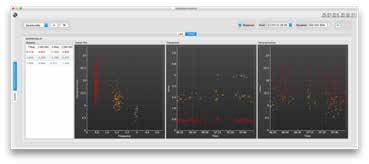

The technology of wide-area measurements systems (WAMS) aims to make available high-quality, system-wide measurements for enhanced monitoring, control and protection applications in a large power system. A key feature of this technology is the precise time synchronisation of the measurements using global position system (GPS) satellites.This feature also allows for the direct measurement of phase angular differences between phasors at distant locations in a power grid. The advent of WAMS has spurred the development of novel methods to determine the health of a power grid. Enhanced control and protection applications for improving system
stability, which were not feasible earlier, are now being contemplated. Our team is developing analytical tools for the WAMS being implemented in India under the
unified real time dynamic state measurement (URTDSM) project by Power Grid Corporation of India Ltd. (PGCIL) and Gujarat Electrical Transmission Company (GETCO). The oscillation mode detection (OMD) tool and vulnerability analysis of distance relays (VADR) tool have already been developed. OMD involves determining the poorly damped swing modes from ambient measurements as well as ring-down waveform analysis. VADR tracks the impedance trajectory as seen by distance relays and flags those relays which are vulnerable to mis-operation. Our research now is focused on developing emergency control schemes for preventing instabilities, or allowing for a graceful separation of the system into stable islands if integrated system operation is not possible. In addition, we are investigating the use of wide-area feedback signals for control of poorly damped power swings.
Prof. S A Soman
Prof. A M Kulkarni
